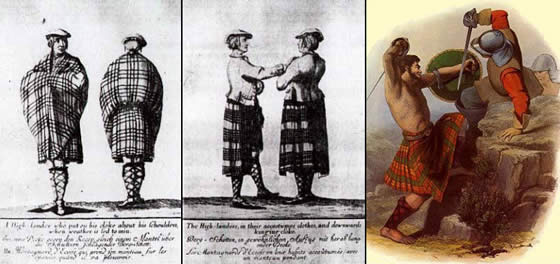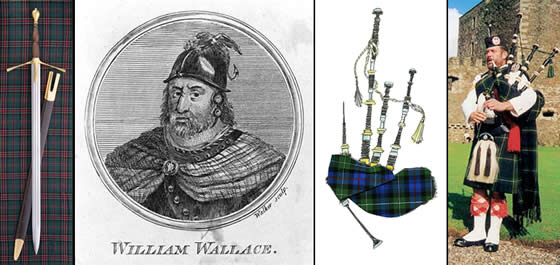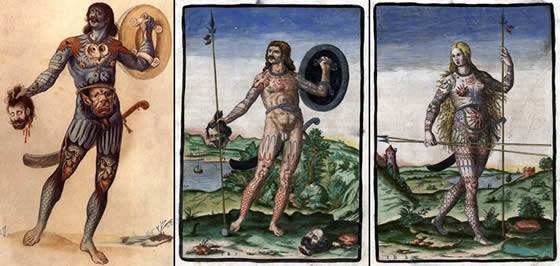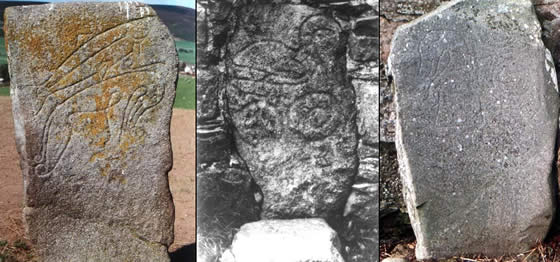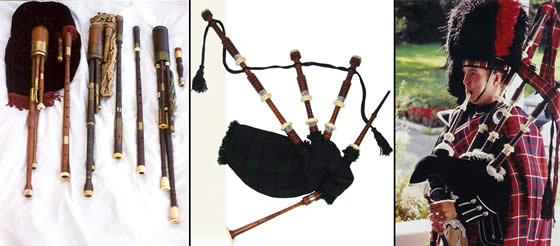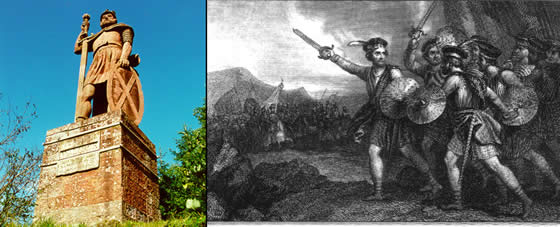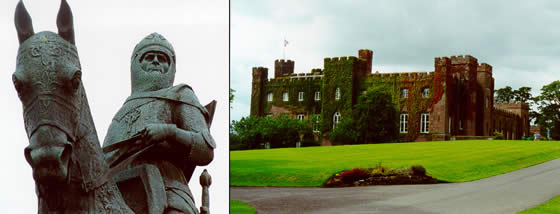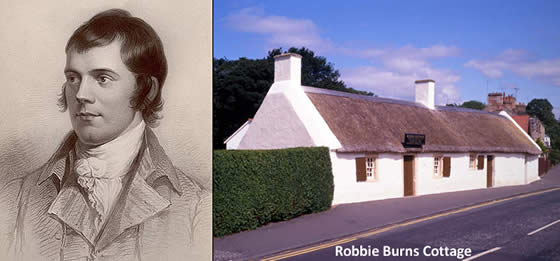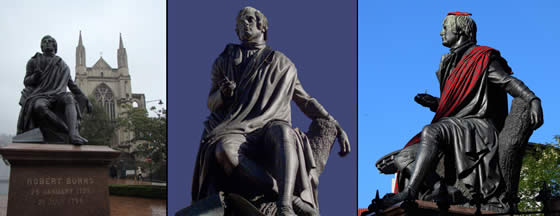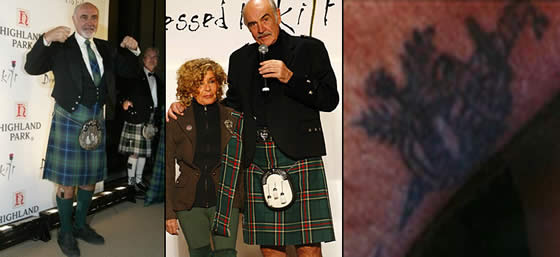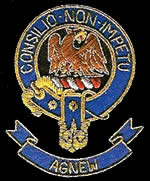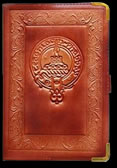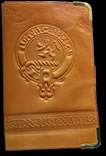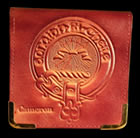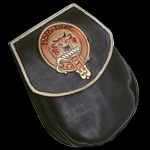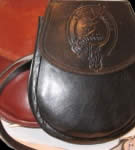 |
|||||||||
 |
|||||||||
|
TATTOO DESIGNS & SYMBOLS - SCOTTISH TATTOOS
Tattoo Symbol Index - A B C D E F G H I J K L M N O P Q R S T U V W X Y Z Tattoo designs - S >> Scottish
Whisky, kilts, and sporrans - unmistakably Scottish. The Celtic knot, bagpipes, tartans, Sean Connery, Robbie Burns, the 'Old Course' at St. Andrew's, and the enigmatic Standing Stones - they conjure up one country only - bonnie Scotland. And we haven't even mentioned the early heroes - William Wallace, Rob Roy, Robert the Bruce - or the Picts.
The Picts are only one branch of the Scottish family tree, but any discussion of Scottish symbols and tattoos must necessarily begin with them. Their bodies, head to toe, were covered with painted images. Okay, hard evidence is scant, but that which exists - much of from the accounts of Roman invaders - has 'depicted' the Picts as covered in 'pictures of animals and other figures'. That's right, the word 'picture' comes to us from the Latin root 'pict'.
Examples of the kinds of tattoo images the Picts may have applied as body art can be seen throughout Scotland in stone carvings known as 'standing stones'. Animals (including the mythic the Loch Ness monster), plus abstract designs and Christian crosses - did these symbols indicate rank or caste? Or were they symbolic of religious devotion, an appeal for fertility, or simply for decoration? We'll never know.
The Romans encountered these painted people in the northern reaches of their conquered British territory, and found them exceedingly fierce. 'Foul hordes…like dark throngs of worms who wriggle out of narrow fissures in the rock when the sun is high and the weather grows warm," that's how a fifth century monk described them. The Roman emperor Hadrian followed the expedient path of building a stone wall across the country to keep the Picts from encroaching southwards. In effect, he ceded northern Britain to these ferocious tattooed tribes. A few centuries later, the Picts stood up to imperialistic Angles who attempted to press northward. The Picts stopped their campaign in Northumbria, and by this historic victory the border of Scotland was more or less permanently established. What if the Picts had lost? Historians suggest that Scotland might never have been established. The Celts, and later the Vikings, were two more of Scotland's founding peoples who were also known to tattoo themselves. In fact, Celtic and Scandinavian art have influenced each other, due probably to trade between the cultures. Both Celtic and Viking art features elaborate and intricate knot work, spirals, and zoomorphic animals whose intertwined limbs often meld into one fantastic being. Celtic art has spawned an entire genre of tattooing all its own.
But modern Scottish tattoos draw on the many symbols that have become universally recognized as being synonymous with Scotland. Nothing so loudly shouts 'Scotland' as the image of a Scottish Highlander resplendent in his Clan kilt. You can hear the swelling sounds of bagpipes in the background, and perceive a tranquil loch in the distance. And, aye, the Highland Games are in progress, with their Celtic dancing and men like mountains tossing the caber. This unique spectacle has long been a global export that makes anyone long for Scotland. The numerous Scottish Clan Badges and varied heraldic animals and symbols unique to different Highland Clans have all become favored tattoo designs for those with a drop of Scottish blood. And the best part of such a tattoo, is often the personal genealogical research that goes into it on the part of a true tattoo enthusiast. For these ancient tattoo designs are the closest thing in the Western world to the tribal tattoos of indigenous peoples elsewhere. Contributing to the worldwide passion for all things Scottish are the many legends of Scottish heroes, of which Mel Gibson's Braveheart has proven to be one of the best. It tells the 700-year-old story of William Wallace, considered to be Scotland's greatest hero. Born a farmer's son, Wallace soon led the resistance against the English military occupation of Scotland, and became the country's symbol of undying patriotism. His willingness to put the freedom of his country above all else united the clans in their defiance of the English King Edward ('Longshanks'). Dying a martyr, William Wallace earned the respect of people worldwide, and today stands as a shining example of a nation's right to govern itself. Wallace is also a symbol of Man's love for his native soil.
William Wallace has been immortalized in statues and stained glass in various locations around Scotland. Robert the Bruce was another hero in the battle against the English, but a member of the ruling class. Indeed, he became King of Scotland in 1306. Early in his reign, his campaign against the English king was faring so badly that he considered abandoning the cause. Exhausted and in retreat, he spent the night mesmerized by a spider relentlessly returning to repair his damaged web. The wind kept destroying it. On the seventh attempt, the spider succeeded. "Now shall this spider teach me what I am to do," said Robert, "for I also have failed six times.' His next battle was won, leading to a complete victory over the English a number of years later.
Before he died, Robert the Bruce wished to make good on a vow to fight the Saracen in Jerusalem. He asked that his heart be taken to the Holy City before being buried in Melrose Abbey. On one of the last crusades, his embalmed heart set off on the journey, but never made it, the couriers being killed in battle. Robert's heart however became a symbol of Scottish pride. Rob Roy was another romantic symbol of courage from the 18th century, although he applied his passion in defense of the Highland way of life against civilizing influences from the Lowlands in the south. Never mind that Robert Macgregor has subsequently been proven to have been a cattle rustler, blackmailer and protection-racketeer, the writer Sir Walter Scott turned him into one of Scotland's most charismatic folk heroes. Anyone who turns adversity to advantage deserves and gets a place in Scottish history. But perhaps the most famous symbol of the Scottish nation, these days, is their most famous poet, Robbie Burns. A church-going farm boy, young Robert was funny, frank, and hard-working. He decried hypocrisy, loved his country passionately, and developed an equal passion for women and whisky. His poems still ring true today, rousing Scottish pride at home and abroad.
Who hasn't heard the line, 'My love is like a red, red rose'? Or, 'A Man's a man for a' that.' Burns' simple language fuels the heart and rouses the imagination - even if some of the dialect challenges foreign ears. (Hey, even some English ears!) Robbie Burns is now a cornerstone of Scottish culture around the world, his memory like a battle cry. 'Scotland Forever!'.
Speaking of which - Sean Connery has taken just such a tattoo. He was serving in the navy at the time. Connery may never become a cultural icon of the status of Robbie Burns, but he's as fiercely patriotic as the best of them.
"Scotland Forever!"
Both the Irish and the Scots are fond of the Claddagh.
Tattoo designs - S >> Scottish Tattoo Symbol Index - A B C D E F G H I J K L M N O P Q R S T U V W X Y Z |
||||||||
| Celeb Tattoos | Facts & Stats | Designs & Symbols | History | Culture | Links | Tattoo Galleries | Contact | |||||||||
 |
|||||||||

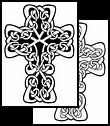 Scottish Tattoo Design Meanings
- Scotland has a long history of tattooing and body adornment. Pride
and passion may explain it. Scots came by it the hard way, suffering
through endless sagas of persecution and struggle, of nationalism
and of victory in the face of adversity. Little wonder that Scots
have earned the reputation of being rugged fighters, poets, lovers,
and loyal clansmen. Few countries possess such a potent arsenal of
symbols that speak so strongly of their proud character.
Scottish Tattoo Design Meanings
- Scotland has a long history of tattooing and body adornment. Pride
and passion may explain it. Scots came by it the hard way, suffering
through endless sagas of persecution and struggle, of nationalism
and of victory in the face of adversity. Little wonder that Scots
have earned the reputation of being rugged fighters, poets, lovers,
and loyal clansmen. Few countries possess such a potent arsenal of
symbols that speak so strongly of their proud character.